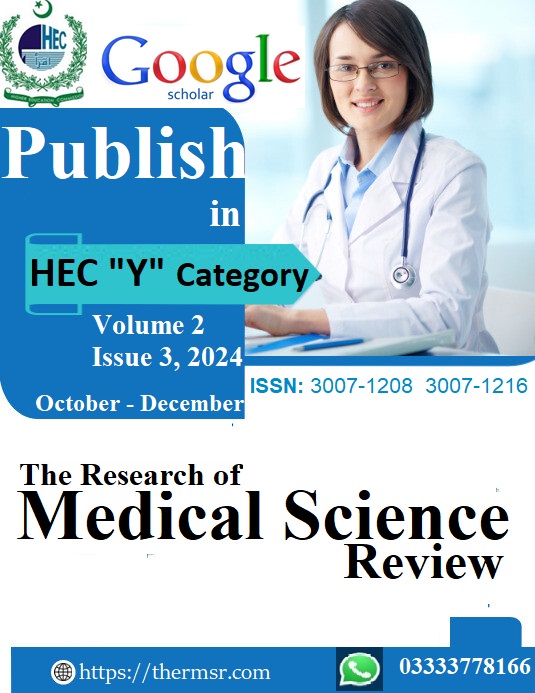EPIDEMIOLOGICAL TRENDS AND CLINICAL STRATEGIES FOR MALARIA CONTROL IN DISTRICT SHANGLA, KHYBER PAKHTUNKHWA
Keywords:
Malaria,, Epidemiology,, Risk Factors, Seasonal Variation, Plasmodium vivax,, District Shangla, PakistanAbstract
Malaria remained a serious public health concern in District Shangla, Pakistan. from August 2023 to February 2024 This study examined the epidemiological patterns of malaria over the past year, focusing on seasonal trends, demographic vulnerability, geographical distribution, and associated risk factors. Data collected from August of the previous year to July of the current year demonstrated significant seasonal variation, with malaria prevalence peaking in July (23.27%) and reaching its lowest in December (1.72%). The highest incidence occurred during the monsoon months of July and August, followed by a gradual decline throughout the year. Children aged 0-15 years showed the highest vulnerability, with a prevalence of 36.17%, followed by adults aged 31-45 years (25.58%). Older adults (>45 years) exhibited a lower susceptibility (18.01%). Geographically, Tehsil Khall reported the highest malaria prevalence (31.12%), followed by Tehsil Timergara (24.57%), underscoring the need for area-specific malaria control strategies in Shangla. Plasmodium vivax was the predominant species, responsible for 85.15% of cases, while mixed infections were relatively
rare (14.85%). Among pregnant women, Plasmodium vivax was detected in 53.45% of cases, indicating a need for focused interventions targeting this vulnerable group. Most malaria cases were observed in individuals under 15 years old, with persistent cases accounting for 17.72% of total cases, highlighting continued transmission and the need for ongoing control efforts. Risk factor
analysis showed that recent travel (76.94%), outdoor activities (72.33%), and the presence of domesticated animals (88.76%) were associated with higher malaria risk. Additional factors included rural residence and specific housing materials, such as stone/mud walls and wood ceilings. The complex epidemiology of malaria in District Shangla, illustrated by seasonal, geographical, and demographic trends, underscored the need for targeted control measures and public health interventions. Improved surveillance and mitigation of identified risk factors were essential for effective malaria management in the region.
Downloads
Downloads
Published
Issue
Section
License

This work is licensed under a Creative Commons Attribution-NonCommercial-NoDerivatives 4.0 International License.















